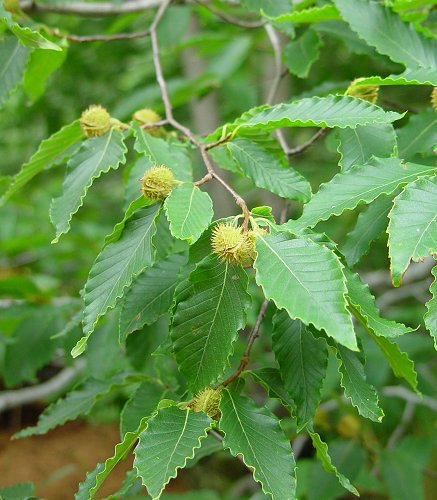Fagus grandifolia Ehrh.
American Beech

Native
CC = 8
CW = 3
MOC = 13
© DETenaglia
Fagus grandifolia Ehrh.American Beech | |
 |
Native CC = 8 CW = 3 MOC = 13 |
© DETenaglia |
|
Family - Fagaceae Stems - No info yet.
Leaves - No info. yet.
Inflorescence - No info. yet. Flowers - No info. yet.
Flowering - April - May. Habitat - Sand, gravel or clay soils, ravines, slopes, small valleys bordering streams and springs. Origin - Native to U.S. Other info. - This species, commonly called "Beech", reaches the western edge of its geographic range in southeastern Missouri. This is an easy species to identify because of its smooth grey bark, buttressing base, and serrate leaves. The long, pointed winter buds are another good characteristic for identification. The soft-bristled fruits, which split open at maturity, contain two seeds. The seeds are distinctly 3-sided, with one side being perfectly flat. Photographs taken at Pictured Rocks National Seashore, MI., 7-23-02, and in Brown Summit, NC., 1-21-03. |